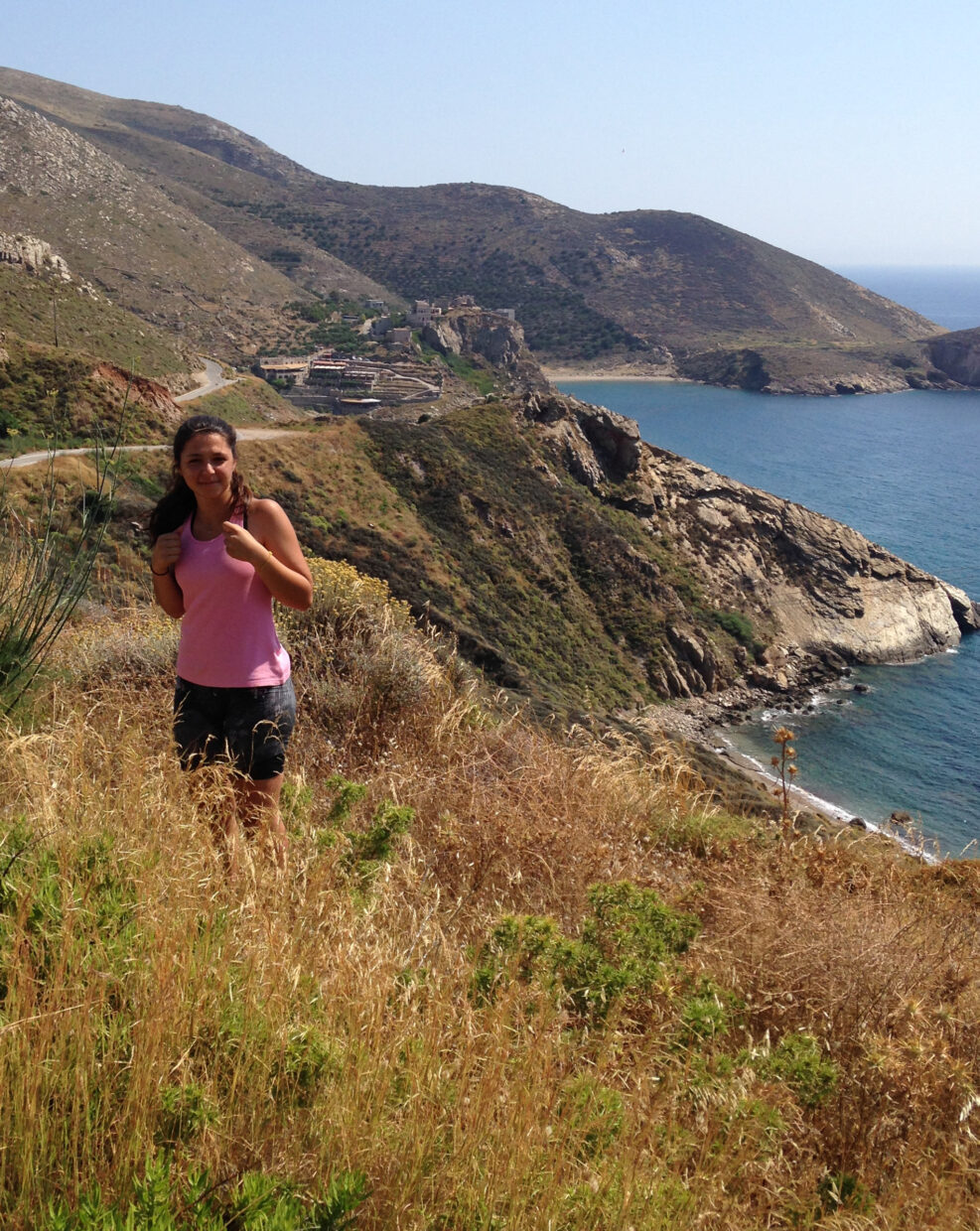Tracing the Origins of Patrick Leigh Fermor’s Mani
In 1958, Patrick Leigh Fermor’s enchanting travelogue Mani: Travels in the Southern Peloponnese appeared on bookshelves. Mani quickly captured the hearts of philhellenes the world over. In it, Paddy tells the story of the first time he visited Mani, charming readers with his romantic description of a region that – for better or worse – encapsulates the spirit of independent Greece, a region known for its historical resistance to Ottoman rule, preservation of traditional culture, and ties to a (largely imagined) ancient Spartan past. What is missing from his tale is any real information about his traveling companion, Joan, or about the specifics of their itinerary; much of the narrative is embellished, fantastical, and at times simply incorrect.
The Leigh Fermors had visited Mani in the summer of 1951, seven years before the publication of Mani. We wanted to know: where exactly did their journey take them, how reliable was Paddy’s account in Mani, and how much has the landscape changed in the 70 years since their visit? In June 2019, we set out on a 10-day adventure to reconstruct their route, using archival materials and modern mapping technology as our guides. To better understand their experience of traveling in the mid-twentieth century, we turned to their notebooks and photographs from the 1951 trip, now held in the Patrick Leigh Fermor and Joan Leigh Fermor Archives at the National Library of Scotland in Edinburgh.
Paddy was known for bringing a trusty notebook with him on all his travels. He used it to record details about his day-to-day adventures, but also to sketch out images, recall local turns of phrase and expressions, and begin drafting his hallmark stirring, poetic descriptions. Some of this information made it into his published works, but after combing through these records carefully, we found a surprising amount of helpful information about the logistics of their journey that didn’t appear in the final version of Mani.
Joan also kept a pocket diary, in which she recorded their location each day – thanks to Joan, we knew for certain where the Leigh Fermors were, and when (Paddy’s own notes usually have blanks where the dates should be)! And while Paddy was jotting musings in his personal notebook, Joan was busy taking photographs. Her photos were invaluable to our work because they captured details about their physical geographic location, marking where they stopped to capture a moment in time or to spend the night. These images also show us the direction they approached each village and reveal (by way of shadows) what time of day they visited.
The results of our study are exciting because we now have a complete map of the Leigh Fermors’ journey through the Mani from Limeni to Kotronas. We weren’t able to walk the entire route, since many of the footpaths that once crisscrossed the landscape have been paved or abandoned – a process that has played out alongside the loss of traditional agriculture and the depopulation of the countryside in favour of urban settings. We relied on least-cost analysis (a type of geospatial modelling) to supplement the archival sources, and we spent a lot of time trudging through the overgrown vegetation under the baking sun. Ultimately, we were able to experience the landscape of Mani through the timeless act of walking – an approach to understanding the past that we, as archaeologists, had not fully explored. Our journey taught us that landscapes are never fixed; though we walked in the very footsteps of the Leigh Fermors, the landscape we encountered was, in many ways, utterly transformed.




MAPPING THE LEIGH FERMORS’ JOURNEY THROUGH THE DEEP MANI IN 1951 by Rebecca M. Seifried, Chelsea A.M. Gardner and Maria Tatum






